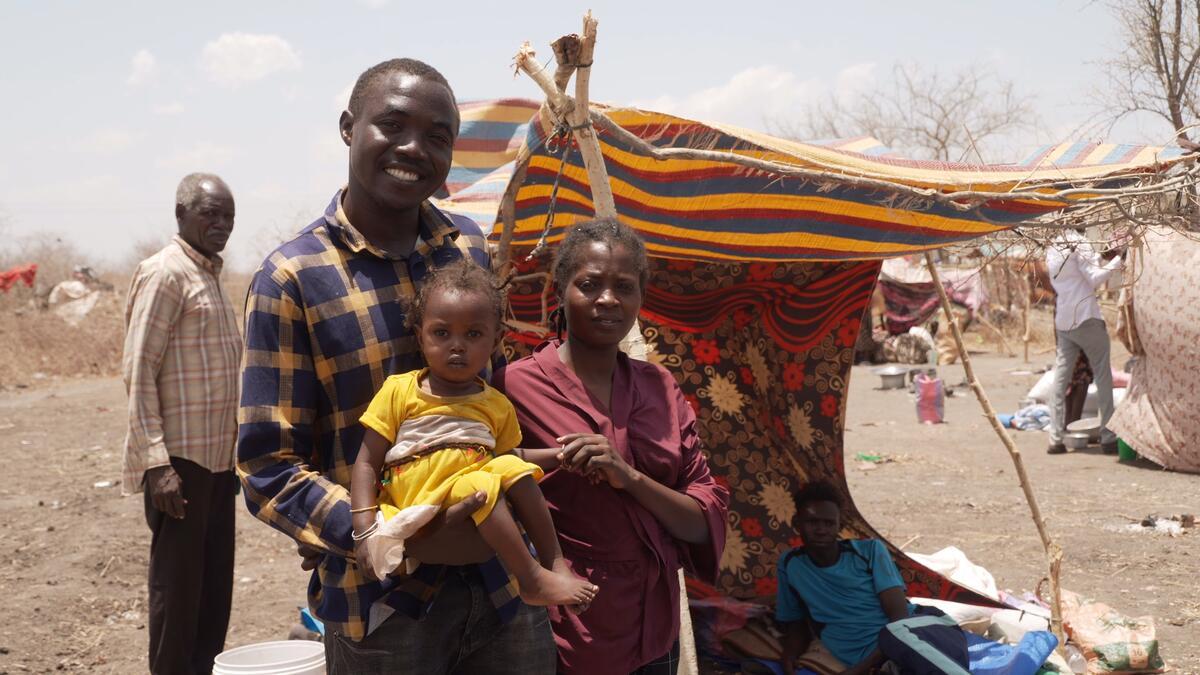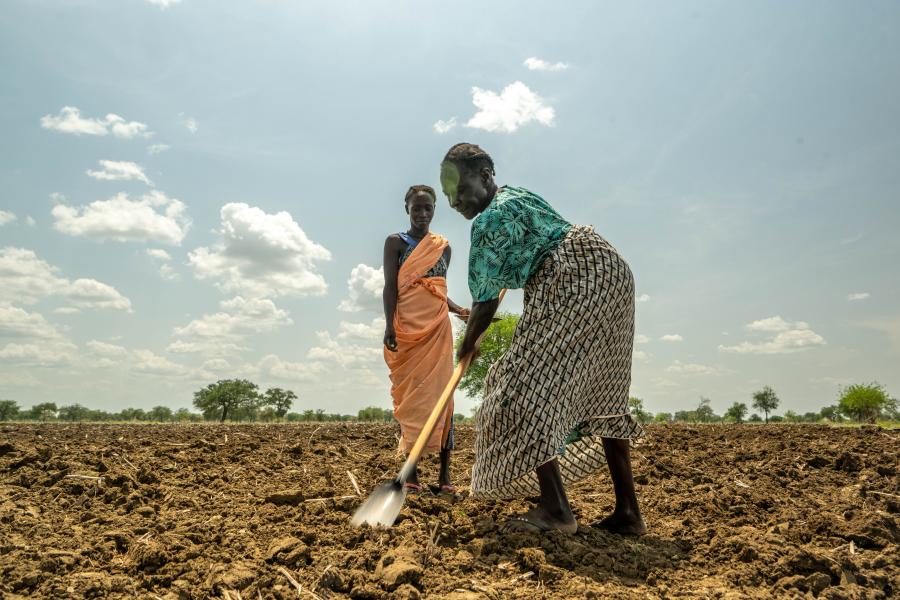Population figures | 2021 - 2025
2025 situation overview
The South Sudan situation remains one of Africa’s most significant refugee crises, with 2.3 million refugees and asylum-seekers in neighbouring countries and a further 2 million South Sudanese internally displaced within their own country by conflict or natural disasters. Protracted displacement has been fuelled by a prolonged civil war, compounded by food insecurity, climate change and large return movements from the crisis in Sudan, with 640,000 South Sudanese returning between April 2023 and October 2024. This influx of returns has strained an already overstretched humanitarian response, and UNHCR’s operation in South Sudan will require sustained support to facilitate logistics and reintegration of returnees who have been forced to return prematurely. Due to the protracted crisis, people have also continued to flee South Sudan. In the first six months of 2024, close to 32,000 South Sudanese arrived in neighbouring countries.
Four consecutive years of flooding in South Sudan have destroyed homes and livelihoods, exacerbated food shortages and weakened the economy, and millions remain at risk. UNHCR is working closely with the authorities, partners and communities to ensure that early warning alerts based on flood simulations reach communities in time for effective risk mitigation.
The two-year postponement of South Sudan’s elections, originally set for December 2024, alongside the enduring impact of the previous civil war—marked by weak infrastructure, poor services, and fragile rule of law—will likely result in continued high displacement in 2025.
UNHCR will support host countries to uphold the quality of asylum, especially for women and children, who make up the majority of South Sudanese refugees. The South Sudan refugee population is over 60% children and youth, and strengthening access to education in national systems remains a priority in 2025. Life-saving support will include preventing and responding to gender-based violence, as well as contributing to gender-based violence risk mitigation throughout the response. UNHCR will strengthen legal and physical protection and enhance biometric registration, documentation and data management in collaboration with host governments. UNHCR will promote social cohesion between refugees and host communities, with South Sudanese youth being empowered and mobilized as catalysts for positive change, social cohesion, and sustainable peace. UNHCR will also continue to work with asylum countries to achieve comprehensive and sustainable solutions.
The largest numbers of South Sudanese refugees are in Uganda, where the Government's progressive policy allows refugees access to land and basic services. Strengthening access to national systems and self-reliance will be the focus for 2025.
This will include leveraging the commitments in the "Education response plan for refugees and host communities", the government-led coordination of refugee education activities, to ensure that refugees are progressively included in the national education system and that primary enrolment remains above 90% and secondary enrolment increases from its recent level of just over 10%.
In Ethiopia, another major host country, UNHCR will work in partnership with the Government and others in the Gambella and Benishangul-Gumuz regions to support the strengthening of services including education, WASH and health.
In Kenya, refugees in Kakuma and Kalobeyei settlements have benefited from the progress towards integration into national systems and access to services such as health care and education under the Government of Kenya’s Shirika Plan and this will continue to be the focus. Efforts will continue towards the registration of schools in the refugee camps as public institutions so that they can benefit from government teachers, grants and other inputs.
In another host country, the Democratic Republic of the Congo (DRC), the situation remained relatively stable in 2024 but few opportunities for improved protection or self-reliance for South Sudanese refugees were available.
UNHCR issued its latest position on returns to South Sudan in May 2024, superseding the previous advisory of October 2021. Given the complex security, human rights and humanitarian environment in South Sudan, UNHCR considers that persons fleeing the country are likely to be in need of international refugee protection in accordance with Article 1(2) of the 1969 OAU Convention. Forced repatriations should not occur except in very specific circumstances, as laid out in the advisory. Those seeking to return home in 2024 reported a lack of food, health care, water, shelter, and education at their return destinations, making it demanding for them to reintegrate and settle. Nevertheless, in 2025, spontaneous returns of South Sudanese are expected to continue from the DRC, Ethiopia and Uganda, with continued larger numbers from Sudan.
UNHCR estimates that 242,000 South Sudanese refugees will have resettlement needs in 2025, mainly from Ethiopia and Uganda. Additional and complementary pathways for admission to third countries will continue to have strategic importance, in terms of sharing international responsibility for refugee protection and reuniting families. While labour mobility and higher education in third countries remain difficult for most refugees to access, the continued growth in such opportunities for qualified and eligible South Sudanese refugees will promote self-reliance and human dignity. UNHCR will aim to increase the proportion of South Sudanese refugees prioritized for UNHCR resettlement programmes to address their protection needs.
Together with the Intergovernmental Authority on Development (IGAD) and the East African Community (EAC), UNHCR will pursue efforts to integrate refugees into national systems and explore regional solutions, including promoting local solutions for the protracted displacement of South Sudanese. International financial institutions remain committed to supporting South Sudan as well as countries of asylum. Uganda and Kenya who host large populations of South Sudanese refugees are benefiting from the World Bank and IFC support in this regard. The World Bank is starting a large-scale health transformation project across the country and continues to invest in refugee hosting areas, while the African Development Bank is due to start its first large project in refugee areas with UNHCR in early 2025.
Financial overview
Sudanese refugees fleeing conflict find safety in South Sudan
By Melik Benkritly and Moulid Hujale in Renk, South Sudan
After three days in a transit centre in Renk County, in South Sudan’s Upper Nile State, Ousman Abdallah and his family are finally boarding a bus to Doro refugee camp in Maban County. They are among many other thousands of Sudanese refugees who have crossed the border to seek safety in South Sudan since the fighting erupted in mid-April.
Read the story











